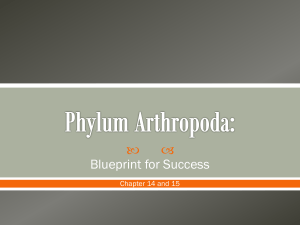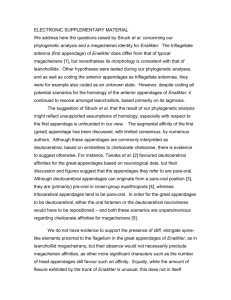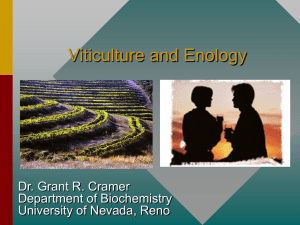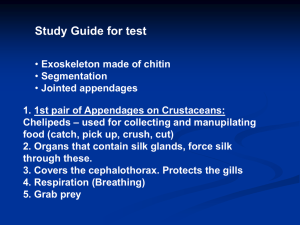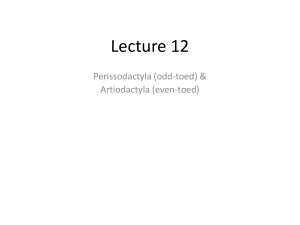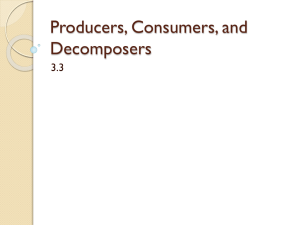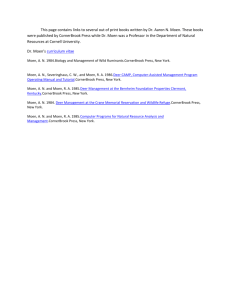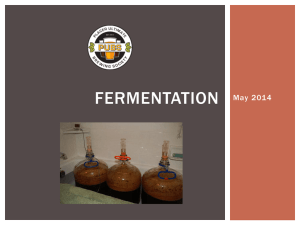Lecture 23-Ungulates
advertisement
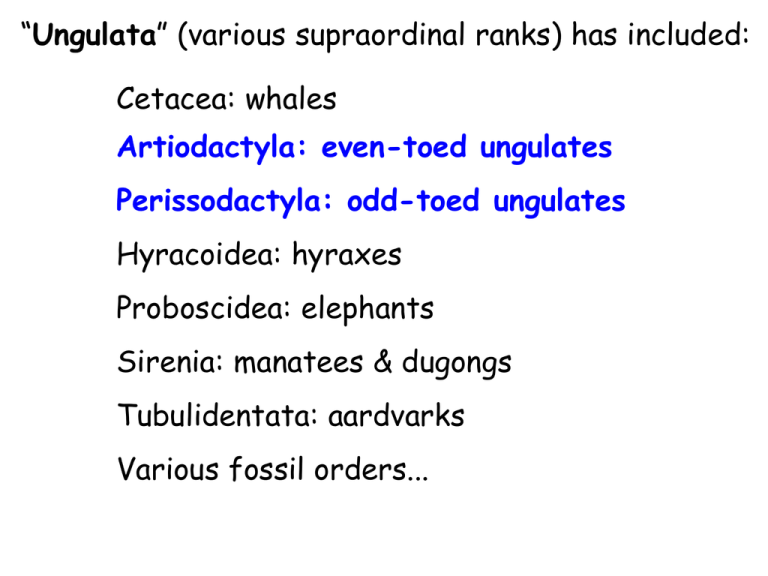
“Ungulata” (various supraordinal ranks) has included: Cetacea: whales Artiodactyla: even-toed ungulates Perissodactyla: odd-toed ungulates Hyracoidea: hyraxes Proboscidea: elephants Sirenia: manatees & dugongs Tubulidentata: aardvarks Various fossil orders... Whales & dolphins Artiodactyls Artiodactyls Carnivorans Pangolins Perissodactyls Bats Solenodons Moles Shrews Hedgehogs Primates Treeshrews Colugos Lagomorphs Rodents Xenarthrans Golden moles Tenrecs Elephant shrews Aardvarks Dugongs & manatees Hyraxes Elephants Mesaxonic horse tapir rhino “double-pulley” astragalus in artios limits distal limb motion to single plane pronghorn pig deer camel Paraxonic Cranial appendages in ruminants Funcions: -enable males to carry out combat in competition for mates -secondarily used for display, indicators of social status, antipredator defense, secretion delivery Cranial appendages in ruminants bovid True “horns” only found in bovids (Bovidae). -unbranched and permanent -Inner bony core, extension of frontal bone -no parts are shed Cranial appendages in ruminants bovid Single pair in all but one living bovid (four-horned antelope, Tetracerus) Cranial appendages in ruminants antilocaprid Pronghorns (found only in Antilocapridae) -Similar bony core to bovids -horny sheath shed annually Cranial appendages in ruminants cervid True antlers only in Cervidae -entirely bony when fully developed -extension of frontal bone -shed periodically (usually annually in temperate zones) -during growth, covered with velvet (highly vascularized) Cranial appendages in ruminants giraffe Giraffe “horns” -bony processes, but not outgrowths of the frontal bone -situated over sutures b/w frontal and parietal bones -permanently covered with skin and hair -present from birth in both sexes Cranial appendages in ruminants rhino Rhinoceros “horns” -non-bony -solid mass of hardened epidermal cells formed from cluster of long dermal papillae -resulting fibers hair-like, but grow differently from true hairs -not attached to underlying nasal bones Order Perissodactyla: 3 families, 6 genera,ca 17 species Family Equidae (horses, asses, zebras) 1 genus, ca. 8 species Family Tapiridae (tapirs) 1 genus, 4 species Family Rhinocerotidae (rhinos) 4 genera, 5 species. -MESAXONIC glutenized, keratinized fibers Order Artiodactyla: 10 families, 80 genera, >220 species! Suborder Suiformes Family Suidae -pigs PARAXONIC Family Tayassuidae -peccaries Family Hippopotamidae -hippos Suborder Tylopoda Family Camelidae -camels, guanaco, llama, alpaca Suborder Ruminantia Infraorder Tragulina Family Tragulidae -chevrotain, mouse deer Infraorder Pecora Superfamily Giraffoidea Family Giraffidae -giraffes Superfamily Cervoidea Family Moschidae -musk deer Family Cervidae -deer, elk, caribou, moose, reindeer Family Antilocapridae -pronghorn Superfamily Bovoidea Family Bovidae -bison, muskox, goats, sheep, antelope, cows Major CRANIODENTAL trends in ungulate evolution: Omnivore/carnivore •pointy incisors & canines •large temporalis, coronoid process; small angular pr. of dentary •cheekteeth tritubercular or bunodont Herbivore •flat incisors, us. no canines; diastema •small temporalis, coronoid process; large angular pr. •cheekteeth flat for grinding; lophodont, selenodont, bilophodont, etc. Major DIGESTIVE trends in ungulate evolution: Omnivore/carnivore •simple, monogastric stomach Herbivore •complex stomach, either foregut fermentation (digastric stomach) or hindgut (cecal or monogastric) fermentation Herbivore Carnivore Insectivoran Rumination (foregut fermentation) Hindgut fermentation Cellose digested: 60% 40-45% Major POSTCRANIAL trends in ungulate evolution: Omnivore/carnivore •simple, monogastric stomach Herbivore •complex stomach, either foregut fermentation (digastric stomach) or hindgut (cecal or monogastric) fermentation •plantigrade •digitigrade, unguligrade, graviportal. •increase SPEED! BIOMECHANICS: Application of mechanical principles on living organisms. Plantigrade Digitigrade Unguligrade
